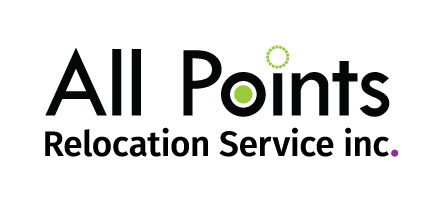Every relocation tells two stories: one about getting talent where it’s needed, and another about what it costs the planet to make that happen. Household goods criss-crossing provinces, weeks in hotel limbo, airport drop-offs that feel more like short-haul logistics, it all adds up.
The good news: relocation’s carbon footprint isn’t a law of nature.
With a few smart design choices, HR can reduce emissions and the administrative heartburn that comes with late moves and long hotels. That’s what we call eco-design in mobility, thinking of relocation policy as an exercise in design, not paperwork.
Designing mobility programs that actually think
A good eco-designed relocation policy works like an engineer’s sketch: clear levers, measurable impact.
- Transit-first city tours. Show newcomers the subway map before the highway map.
- Virtual house-hunts. One Zoom call beats one round-trip flight and several awkward breakfasts at the Holiday Inn.
- Shorter hotel runs. Every extra week in temporary accommodation consumes more energy than an average household – better destination support gets people settled sooner.
- Mover proximity rules. Pair the employee with the nearest qualified mover; our clients have seen route distances drop by 12 %.
- Digital everything. Paper belongs in novels, not relocation workflows.
Each of these steps is small. Together, they’re design, and design always beats improvisation.
The hidden physics of relocation
Mobility is full of invisible energy transfers. Shipping a sofa burns fuel. Temporary housing burns watts.
Even poor neighbourhood selection locks an employee into a high-emission commute for years.
| Impact Area | Hidden Cost | Smarter Practice |
|---|---|---|
| Shipping | Long-haul trucking, packaging waste | Match mover corridors, reuse cartons |
| Temporary accommodation | High energy and water intensity | Use eco-certified properties, cap duration |
| Commuting | Car dependence | Focus on transit-rich areas |
| Packing waste | Single-use materials | Partner with movers offering box-return programs |
None of this slows hiring. It just stops money and carbon from leaking out the side door.
From awareness to numbers that matter
Here’s where it gets both simple and surprisingly powerful: start asking for data.
Even a ten-question survey to movers – “Do you track fuel? Reuse materials? Own an EV truck?” – tells you where to aim your next improvement.
From there, HR can:
- Set maximum mover distances (why drive 600 km when 200 km will do?).
- Book green hotels first.
- Reward suppliers who can actually prove their emission reductions, not just promise them in italics.
Eco-design isn’t slower or more expensive. It’s what happens when logistics grows a conscience.
A lighter footprint, and faster shoes
Sustainable relocation isn’t virtue signaling, it’s efficiency with better manners.
And the companies that embed carbon thinking into their mobility policies this year will look clairvoyant next year, when ESG auditors start following the trucks and checking the utility bills.
At All Points Relocation, we can help design programs that move people faster, lighter, and a little more responsibly – because the planet shouldn’t need to file an expense report.

